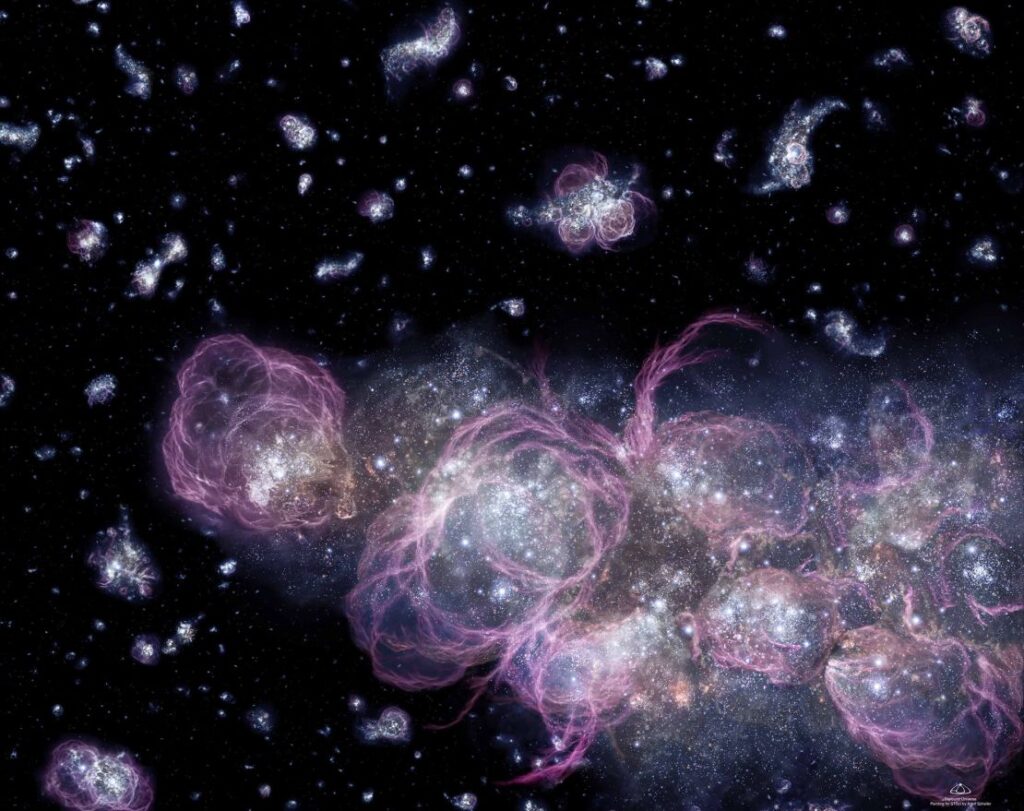Astronomers have made the surprising discovery of oxygen and elements like heavy metals in the most distant known galaxy. The galaxy is 13.4 billion light-years away, meaning it formed in the early days of the universe.
Astronomers believe the big bang created the universe 13.8 billion years ago.
The unusually large, luminous distant galaxy, called JADES-GS-z14-0, was initially detected in January 2024 using the James Webb Space Telescope, which observes the universe in infrared light that’s invisible to the human eye. The space observatory can effectively peer back in time to the beginning of a mysterious era called Cosmic Dawn, or the first few hundred million years after the big bang when the first galaxies were born, because it can observe light that has traveled for billions of years across space to Earth.
Light from JADES-GS-z14-0 has taken 13.4 billion years to reach our corner of the universe, so Webb and other observatories such as ALMA, or the Atacama Large Millimeter/submillimeter Array in Chile’s Atacama Desert, are seeing the galaxy as it was when the universe was only about 300 million years old.
When astronomers used ALMA to follow up on Webb’s initial observations, they were stunned to find the presence of oxygen and heavy metals because their presence suggests that galaxies formed more quickly than expected in the early days of the universe.
“It is like finding an adolescent where you would only expect babies,” said Sander Schouws, lead author of The Astrophysical Journal study and a doctoral candidate at Leiden Observatory at Leiden University in the Netherlands, in a statement. “The results show the galaxy has formed very rapidly and is also maturing rapidly, adding to a growing body of evidence that the formation of galaxies happens much faster than was expected.”
The fact that JADES-GS-z14-0 was laden with heavy elements is causing astronomers to question what some of the earliest galaxies were really like — as well as how many more they may find using Webb and ALMA.


